Hero Motocorp’s presentation of the RNT hybrid turbo-diesel-electric motorcycle prototype at Auto Expo in New Delhi last week might well begin a whole new phase in the development of the motorcycle as an all-purpose utility vehicle. Most significantly, the RNT offers a range of life solutions well beyond mobility – it's designed to pull a plow or a harvester, carry heavy loads safely and adapt to play a practical role, particularly in rural areas and the developing world.
The RNT has an ultra-frugal 13.5 hp, 150 cc diesel engine which produces 35 Nm of torque at just 1600 rpm, with an optional turbocharger which will more than double both those figures. There’s also an optional front wheel hub motor producing 1.3 hp, giving the bike two-wheel drive. Even more significantly, the RNT’s powerful generator can output 1500 W of 230 V electrical power continuously, making it ideal as a portable power source, and the LED headlight unclips to offer a portable and powerful light source. Large flat loading surfaces front and rear plus numerous mounting handles indicate a long overdue rethink of how the scooter is used in many parts of the world.
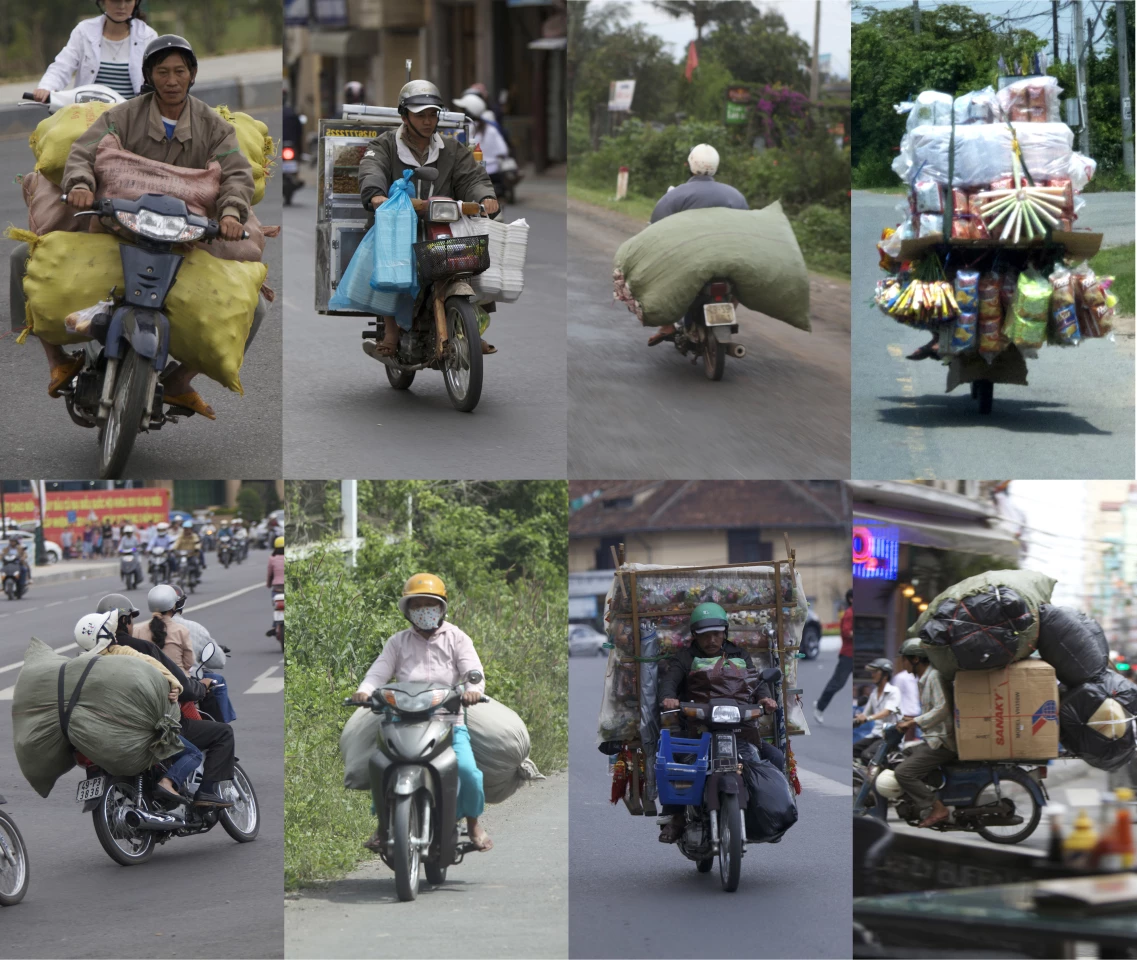
The low-cost, cheap-to-run, step-thru scooter has become the default family transportation in many developing countries due to its light weight, low running costs and ease-of-use. While the cost of a scooter in these areas often represents many months, sometimes years of wages, it is still a relatively affordable form of transport and has become an enabler in many ways, playing the dual role of family car and all-purpose haulage vehicle for goods.
In many parts of Asia, Africa, South America and India, the scooter represents more than 90 percent of two-wheel sales, with two-wheelers significantly outselling cars, which are the domain of the wealthy elite.
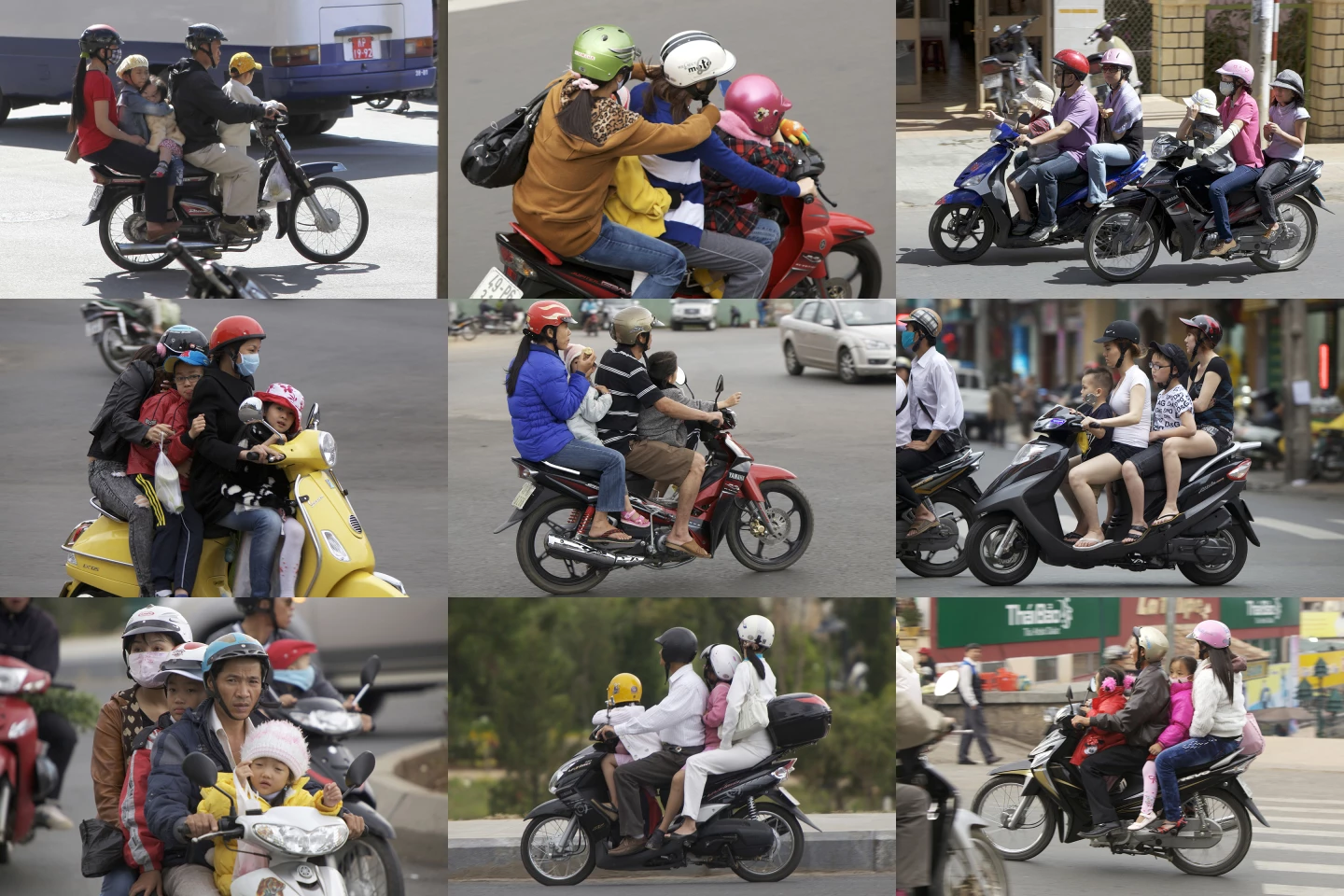
Hence, Hero Motocorp’s ingenious rethink of the scooter form factor offers significantly more practicality than the existing scooters in the marketplace which have, until now, been adapted from their western design for the many needs of the markets they serve.
The 150cc diesel engine is a first in that it uses a commonly available fuel which is much cheaper than petrol in India, and will likely produce remarkable fuel consumption figures in such a small capacity engine, especially when used in a motorcycle weighing just 136 kg. It’s no coincidence that the only diesel motorcycle which has ever been produced in real numbers was produced by Royal Enfield in India.

The low-grade technology employed by Royal Enfield in making the bikes resulted in noxious halitosis and the model was discontinued some 12 years ago, but the need remains, and with more than a billion people, the Indian Government is in no position to subsidize fuel prices as governments do in the rest of the world. A little known fact is that globally, governments collectively subsidize fuel prices to the tune of half a trillion US dollars annually. This is a machine designed to have a low environmental footprint, not just because it's good for the planet's respiratory system, but because as fuel prices rise, it will offer the lowest possible practical running costs.
Diesel engines are also extremely durable and reliable and the very few examples of diesel motorcycles that have made it to commercial production (see prior examples below) are surrounded by tales of ultra-low running costs and extreme high mileage.
Rural roads in developing areas rarely have good surfaces, so speeds beyond 35-40 mph (60-75 km/h) are often impractical or unsafe, and the further you get from big cities, the worse those roads get. So the RNT’s modest 13.5 hp is entirely adequate for these environments, even though it gives the bike a top speed of just 70 km/h. As scooters in such places are often pressed into service for carrying ridiculously heavy loads, the RNT’s diminutive but torquey motor is again ideal, producing 35Nm of torque at just 1600 rpm. That's a level of torque that sports bikes of double the capacity make at four to five times the RNT's engine speeds.

For places where more power and torque is required, there will be an optional turbocharger for the RNT which will more than double both those figures. Hence, the turbo option is, in effect, a larger capacity version of the same bike, much as traditional manufacturers once produced both a 250cc and 350cc version of the same machine, or a 350cc and 500cc version in earlier times.
The RNT was also announced as having an optional electric front wheel hub motor producing 1.3 hp horsepower, effectively giving the RNT two-wheel drive for slippery unpaved roads – diesel running using rear wheel drive only for less challenging conditions, or electric-only running with front wheel drive for places where silent, economical or emission-free running is important. Research on two-wheel-drive motorcycles done by Yamaha and Ohlins suggests around 10 percent of the rear wheel horsepower is ideal for the front wheel in a two-wheel-drive motorcycle, so the 1.3 hp hub motor seems to reflect that Hero has been keeping up with the Joneses (and Yamahas in this instance).
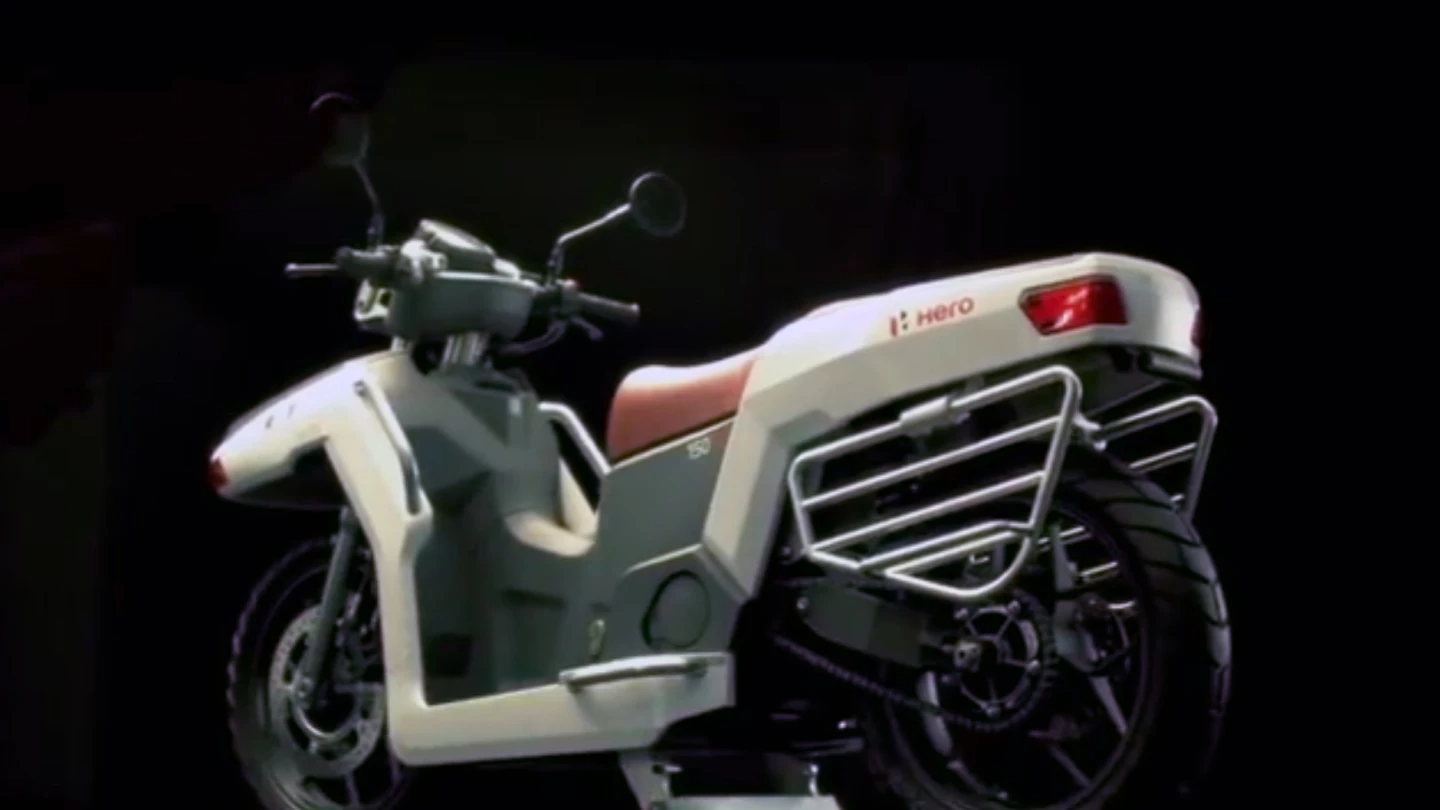
This enables the RNT to adapt to the particular needs of the moment. In much of the bike’s intended market, this combination of drive options will enable the RNT to cover a range of territories that the traditional scooter, with its internal combustion engine, cannot.
Many of the other design features of the RNT indicate a degree of thought about real world usage of scooter that is well beyond anything in the marketplace. One of the key themes for the RNT is that it offers solutions for life beyond mobility.
The first and most significant is that the RNT’s powerful oversized generator can continuously output 1500 W of 230V electrical power. This enables the RNT to double as a portable diesel generator on wheels – a practical power source for the vast remote tracts of land in the still-developing world that don’t have grid electrical power.

A further ingenious twist is the RNT’s LED headlight which can be easily removed from the bike to serve as a powerful and portable light source – another feature sure to appeal to people who do not have electrical power connected at home, or who wish to work, camp or play somewhere off-the-grid. It also means that whatever you're doing, wherever you're doing it, you can keep doing it after the sun goes down.
Perhaps the most interesting change evident in the RNT is that its low-speed, low-fuss, economical motor is also designed as a workhorse – the RNT is a two-wheeled “iron horse” beyond the loading surfaces front and rear designed to carry lots of things.
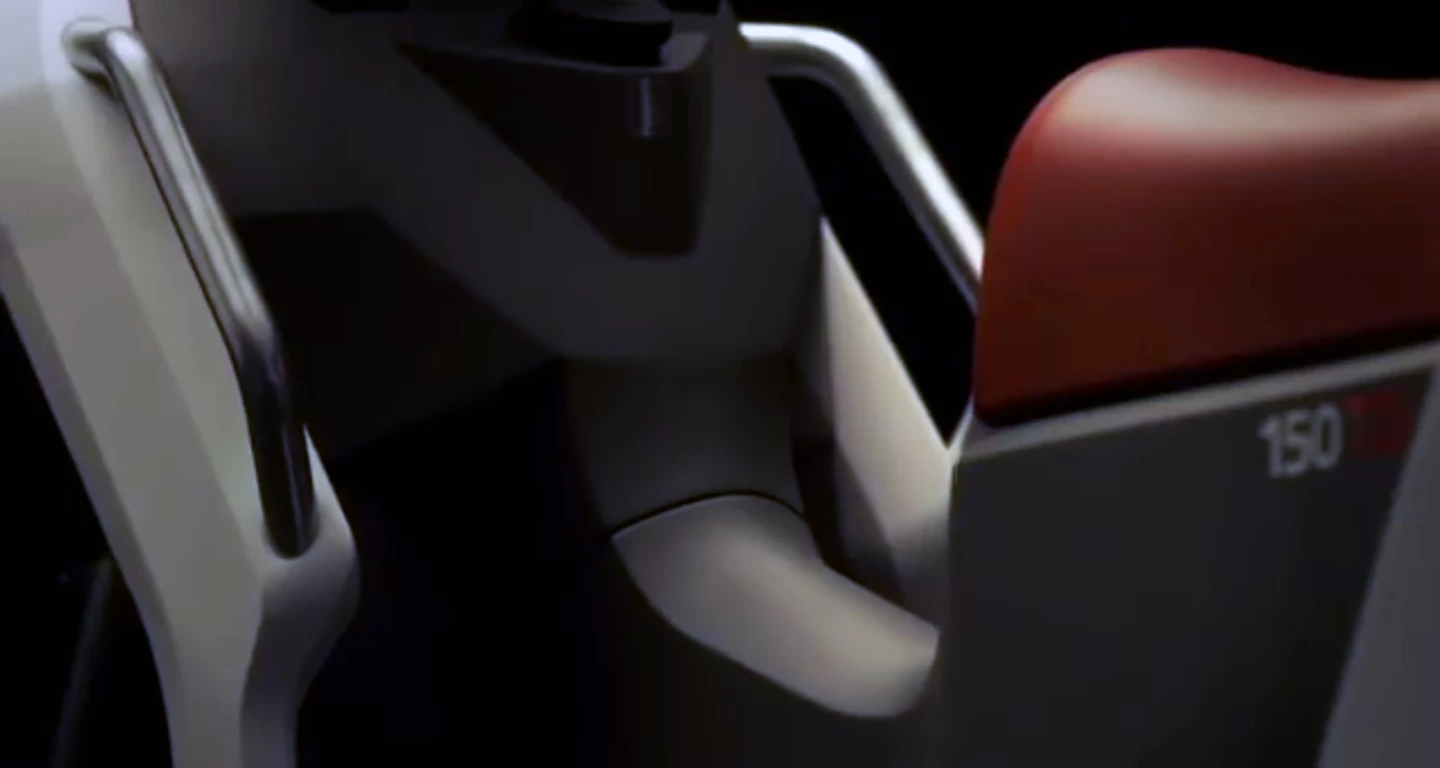
Amongst the many features of the RNT is that the frame has been designed to be easily extendable with multiple built-in mountings for attachments to suit the user’s needs and there is provision for the bike to attach both a plow and a harvester – Hero is obviously thinking well outside the purview of current motorcycle manufacturers in addressing the needs of the developing world.
Why has the diesel motorcycle been so long in coming?
Considering the virtues of Rudolf Diesel’s famous variant of the internal combustion engine, and the recent massive advances in overcoming its previous shortcomings, it is quite astonishing that there have been so few diesel motorcycles built. Royal Enfield is the only company to have ever produced a series production diesel motorcycle, with Hayes Diesel technology of the United States and the Russian-made Dnepr vying for a distant second in total numbers produced.

Hayes has only ever sold its Kawasaki KLR 600/650 mutants to the American Armed Forces, so that might offer some idea of the miniscule number of diesel motorcycles produced to date, particularly in comparison to the hundreds of millions of two-wheelers powered by the internal combustion engine that have been sold to the public in the last 125 years.
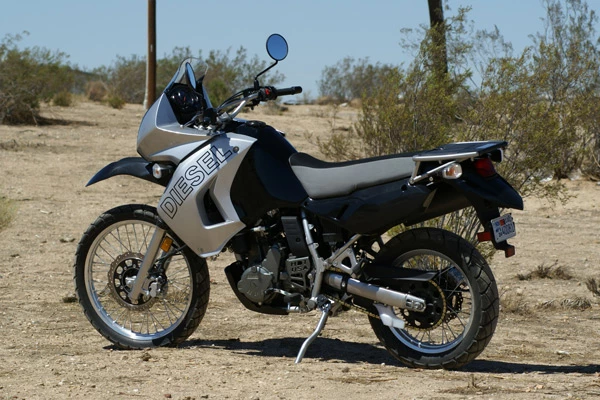
Hayes also has a production diesel motorcycle planned for civilian use named the Bulldog, which like its military cousin, will be based on the Kawasaki and use a 667 cc diesel engine producing 35 hp at 5400 rpm and offering 43 ft-lbs of torque at 3300 rpm. The bike has been delayed because military needs keep increasing, but if you're in the market for an off-road diesel, you can sign up for information on the Bulldog when it becomes available at the HDTUSA web site.
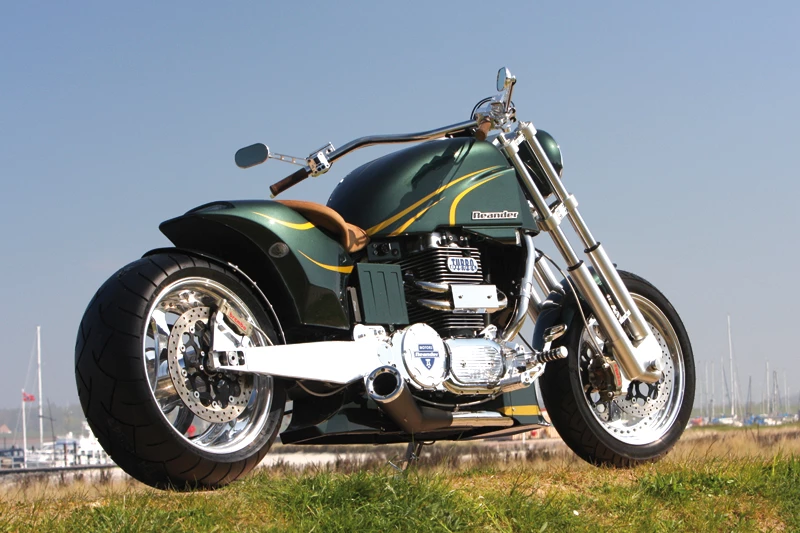
Of all the diesel motorcycles we’ve ever mentioned in 12 years of producing Gizmag, we can only find one other marque still operating: Kiel-based Neander Motorcycles produces a 1340cc air- and oil-cooled twin producing 112 hp at 4200 rpm and a whopping 214 Nm of torque at 2600 rpm – that’s the sort of grunt that was until recently only associated with a V8 automobile engine. Despite the heavy metal nature of the beast, it still delivers fuel economy of 4.5 liters per 100 km from its turbo-diesel engine which uses twin counter-rotating cranks to sooth its inner demon.
Rudolf Diesel’s native Germany is still the undisputed heartland of diesel motorcycles with a number of small boutique manufacturers producing handfuls of hand-built motorcycles. We're not sure if this concentration of diesel manufacturers is because the practicality, durability and frugality of the diesel somehow appeals to the Teutonic mindset, or if it's some by-product of the German education system which quite rightly eulogizes the genius of Rudolf Diesel.
The best-known of the German boutique brands are Dieselwiesel and Sommer which have respectively produced 200 motorcycles and 130 motorcycles to date.
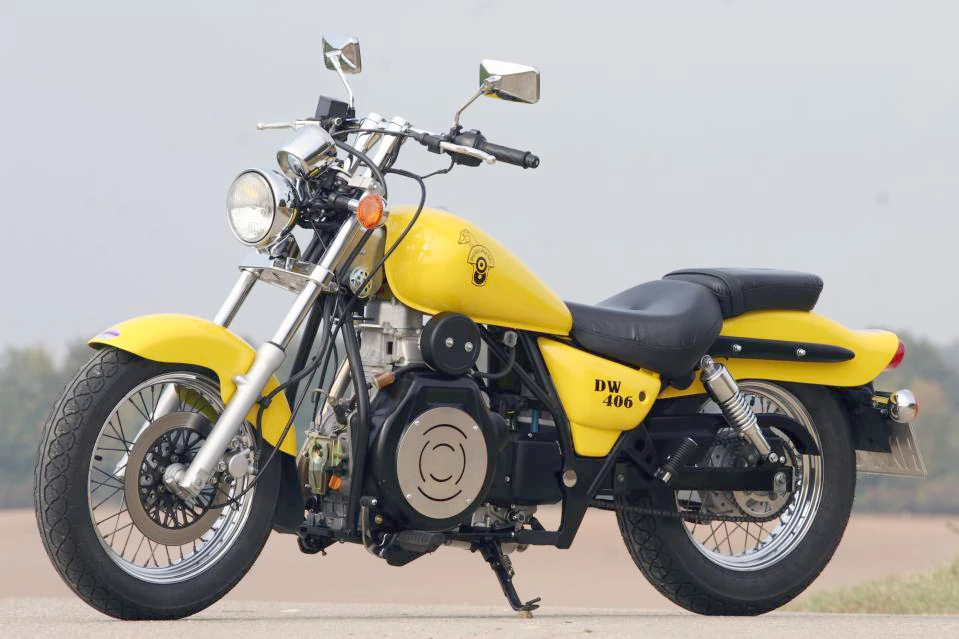
Current offerings from Dieselwiesel are all based around a 7 kW, 406 cc single weighing 149 kg and costing under EUR10,000.

Sommer diesels are still available, but don't plan on getting one any time soon. The company has produced around 130 motorcycles and has unfilled orders for the next 80 machines it produces, so the waiting list already stretches well into 2015 production for the company's 8 kW, 462cc machine, which retails for EUR9200.

Sadly, the Star Twin ThunderStar 1200 TDI is no longer in production. The bike used a heavily modified 1.2-litre Volkswagen diesel engine producing 70 hp and 160 Nm torque.
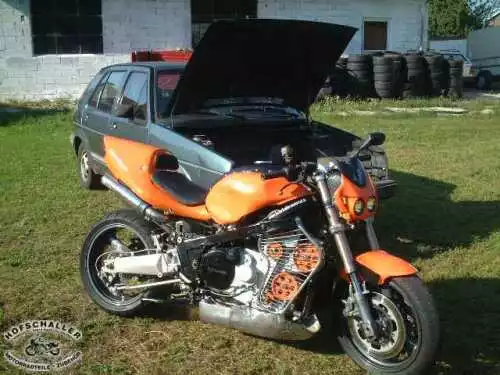
One machine that has the potential to replace the Star Twin ThunderStar 1200 TDI on your wishlist if you are a superbike enthusiast with a penchant for something very different and diesel is the Dieselfighter – essentially a Volkswagen Golf 1600cc diesel engine in a Kawasaki GPZ 1000 RX frame and running gear. Once again, the bike is of German manufacture, and orders are built upon customer request, though the company that produced the Dieselfighter will build you anything you wish, using the frame and motor of your choice.

The Dutch-built Track Diesel is another that might cease to exist, with a final production run of 800 cc three cylinder diesel motorcycles having been recently completed. The company web site states that it is not producing motorcycles any more, but there are also indications of the coming of a diesel electric hybrid motorcycle.
When we contacted Track Diesel to enquire, the reply was equally as noncommittal: "On the E-TRACK we cannot give more info. And maybe never will. We now build only on special customers request. No production planned whatsoever!"
Which brings us back to the original question. There doesn't seem to be a logical reason why the diesel engine hasn't found its way into many more two wheelers. Diesel engines are now in the majority of new cars sold in Europe, yet only a few hundred diesel motorcycles are produced in the entire world each year. Perhaps it's that motorcycles are significantly more fuel-efficient than cars and the oil crisis hasn't materialized as yet. Readers are welcome to share their views on this matter in the comments section below.
Finally, the Hero RNT is not a definite production machine at this point in time, but it represents such a quantum leap in motorcycle design that its production and proliferation seems inevitable.
For Hero Motocorp, it's a coup of considerable magnitude. The company that just four years ago was faced with the herculean task of replacing the design and manufacturing expertise of the world's largest and most technologically-sophisticated motorcycle company by the end of 2014 when its relationship with Honda broke up, now seems more than up to the task.
Indeed, Hero seems also seems capable of designing and producing machinery better suited for the emerging market it currently serves than its former partner, but also of producing truly ingenious solutions that existing long term manufacturers with deeply-rooted R&D structures could simply never envisage.
Bravo Hero Motocorp for thinking outside the square.
The company's promo video for the RNT concept is below.












































